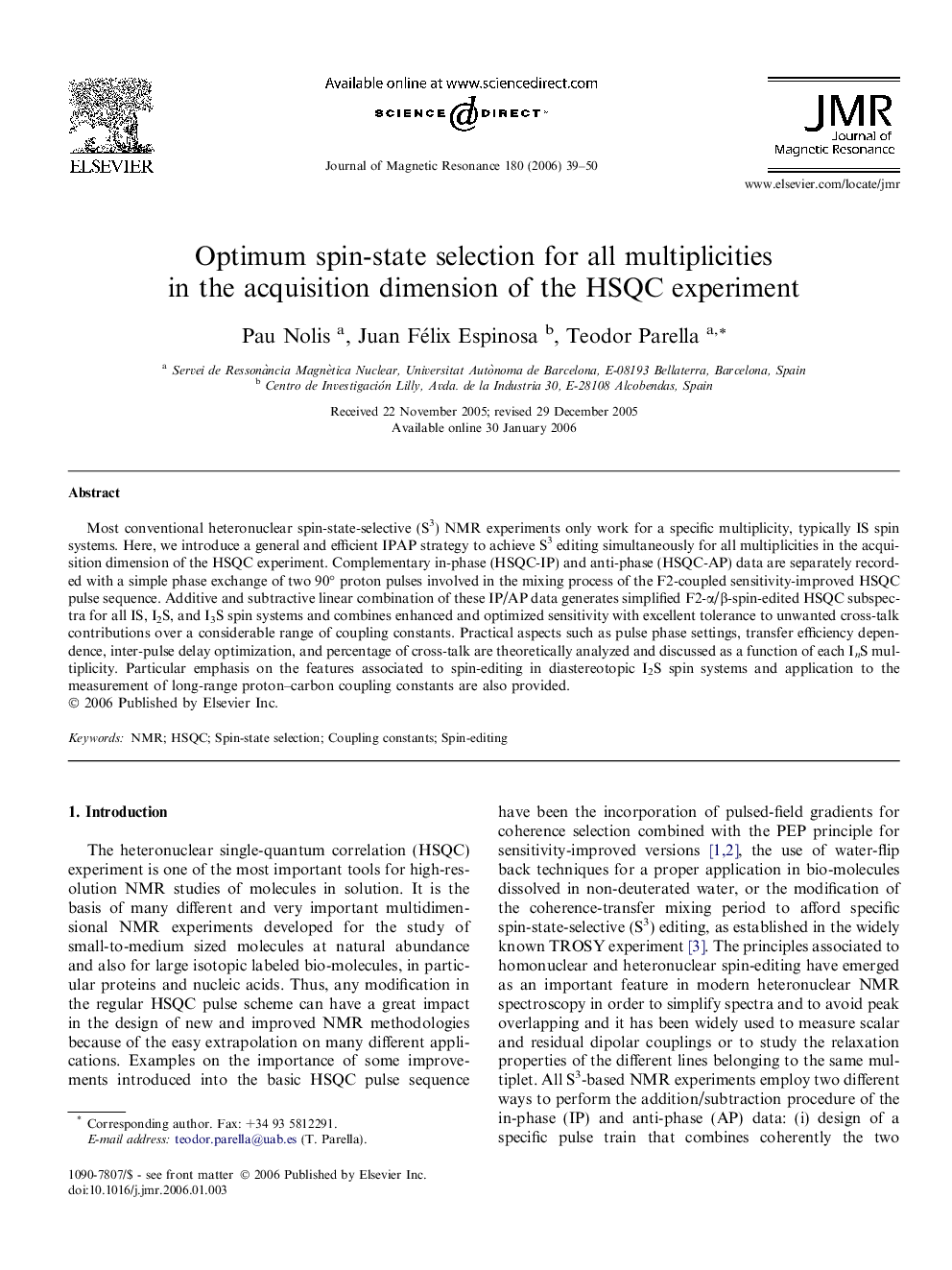| Article ID | Journal | Published Year | Pages | File Type |
|---|---|---|---|---|
| 5407822 | Journal of Magnetic Resonance | 2006 | 12 Pages |
Abstract
Most conventional heteronuclear spin-state-selective (S3) NMR experiments only work for a specific multiplicity, typically IS spin systems. Here, we introduce a general and efficient IPAP strategy to achieve S3 editing simultaneously for all multiplicities in the acquisition dimension of the HSQC experiment. Complementary in-phase (HSQC-IP) and anti-phase (HSQC-AP) data are separately recorded with a simple phase exchange of two 90° proton pulses involved in the mixing process of the F2-coupled sensitivity-improved HSQC pulse sequence. Additive and subtractive linear combination of these IP/AP data generates simplified F2-α/β-spin-edited HSQC subspectra for all IS, I2S, and I3S spin systems and combines enhanced and optimized sensitivity with excellent tolerance to unwanted cross-talk contributions over a considerable range of coupling constants. Practical aspects such as pulse phase settings, transfer efficiency dependence, inter-pulse delay optimization, and percentage of cross-talk are theoretically analyzed and discussed as a function of each InS multiplicity. Particular emphasis on the features associated to spin-editing in diastereotopic I2S spin systems and application to the measurement of long-range proton-carbon coupling constants are also provided.
Related Topics
Physical Sciences and Engineering
Chemistry
Physical and Theoretical Chemistry
Authors
Pau Nolis, Juan Félix Espinosa, Teodor Parella,
